On View
How Julie Mehretu Created Two of Contemporary Art’s Largest Paintings for SFMOMA
Years in the making, the paintings debuted to the public over the weekend.
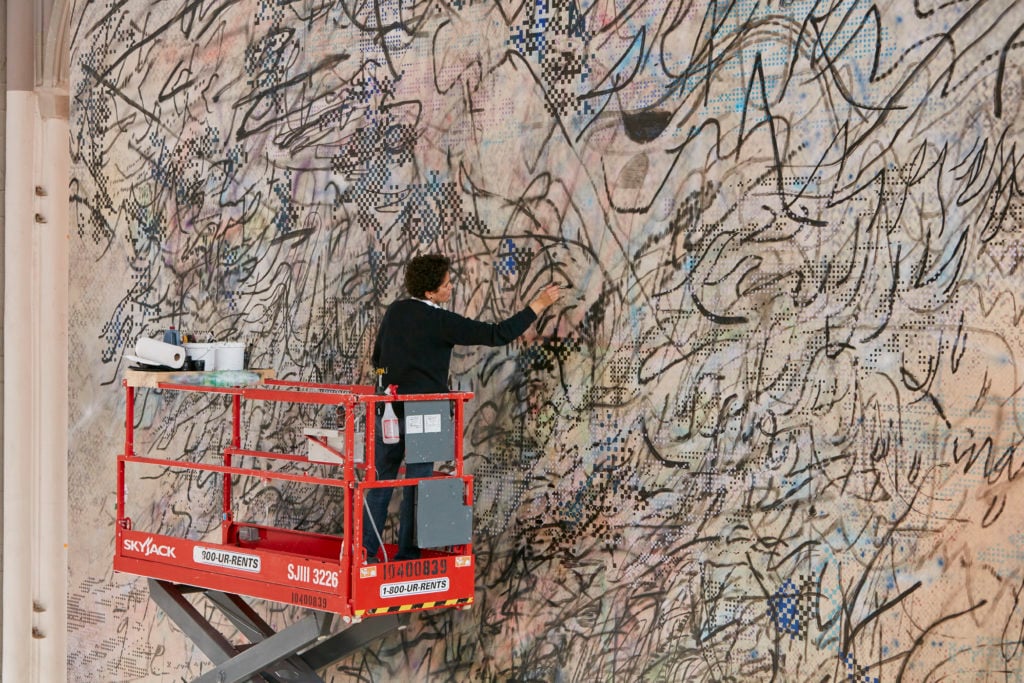
Years in the making, the paintings debuted to the public over the weekend.

Julia Halperin

If you happened to wander into the lobby of the San Francisco Museum of Modern Art (SFMOMA) last week, you would have been confronted by an extraordinary sight: a woman, suspended in midair on a mechanized lift, making the finishing touches to the largest and most ambitious paintings of her career.
Julie Mehretu’s diptych HOWL, eon (I, II) (2017), which debuted at SFMOMA on September 2, is enormous. Each canvas is 27 feet high and 32 feet wide—in other words, larger than Leonardo’s Last Supper, or Raphael’s The School of Athens. Together, they are bigger even than Michelangelo’s The Last Judgment.
“It’s a historic scale—it’s not typical of the work of our own time,” says Gary Garrels, the museum’s curator of painting and sculpture. “Even the largest paintings of the Abstract Expressionists were nowhere near this scale.”
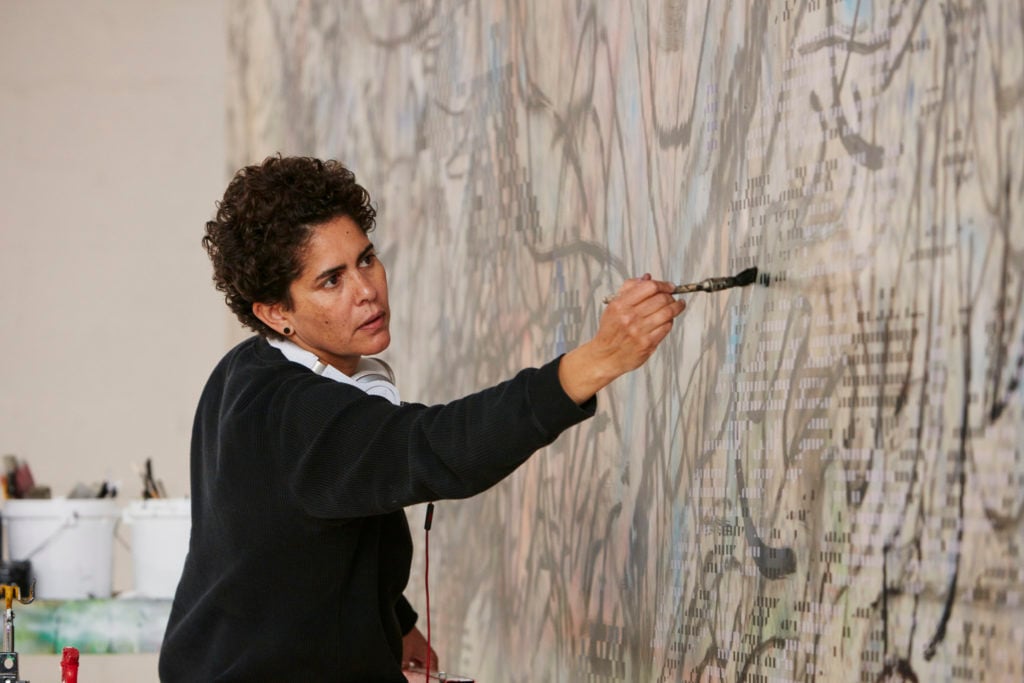
Julie Mehretu at work. Courtesy the artist and Marian Goodman Gallery ©Julie Mehretu; photo Tom Powel Imaging, Inc.
Created as part of SFMOMA’s new commissioning program, the site-specific canvases are the first works to occupy the mammoth walls above the museum’s central staircase since the renovated building reopened last year.
The paintings’ journey to San Francisco was as epic as their size. For 14 months, Mehretu relocated her studio to a decommissioned church in Harlem in order to create the paintings. It was the only space she could find that was large enough to house them. To complete the jumbo works, the Ethiopia-born, New York-based artist also had to scale up her tools, finding “some very big, very long brushes,” Garrels notes.
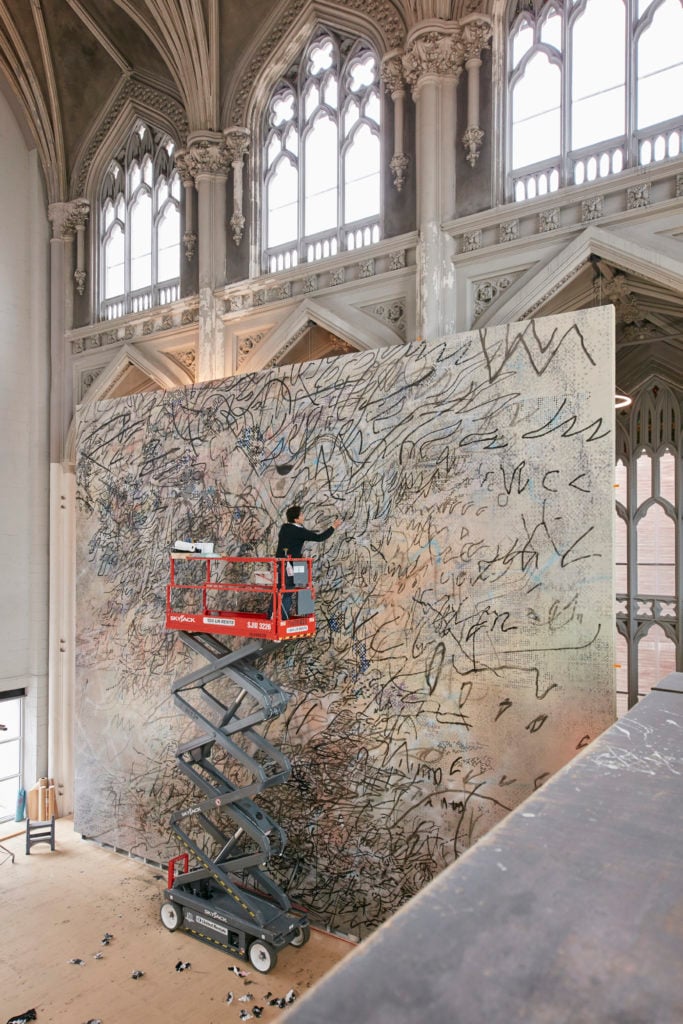
Julie Mehretu at work. Courtesy the artist and Marian Goodman Gallery ©Julie Mehretu; photo Tom Powel Imaging, Inc.
Although the paintings are among the most highly anticipated commissions of the year, their content long remained a closely guarded secret. (The first and only hint of what they would look like came via a partial photo in a lengthy New York Times story about the commission last month.)
Now, the public can finally see them in their full glory. The sweeping compositions are roiling with black ink that in places resembles hieroglyphics, calligraphy, and even parts of bodies—a recent turn for the abstract painter. Dusky pinks, blues, and oranges hover behind, as if the sun is setting just out of view.
Mehretu’s foray into figuration was foreshadowed by a body of work that debuted at Marian Goodman Gallery last year. But the vibrant palette is a new development. After years of working in more muted tones, she has reintroduced the rich colors for which she became known when she emerged in the early 2000s.
“There are portions of the painting that feel almost like a rainbow has drifted in and dissipated across the surface,” Garrels says. “It’s dark and moody and full of tumult, but those beautiful colors really glow.”
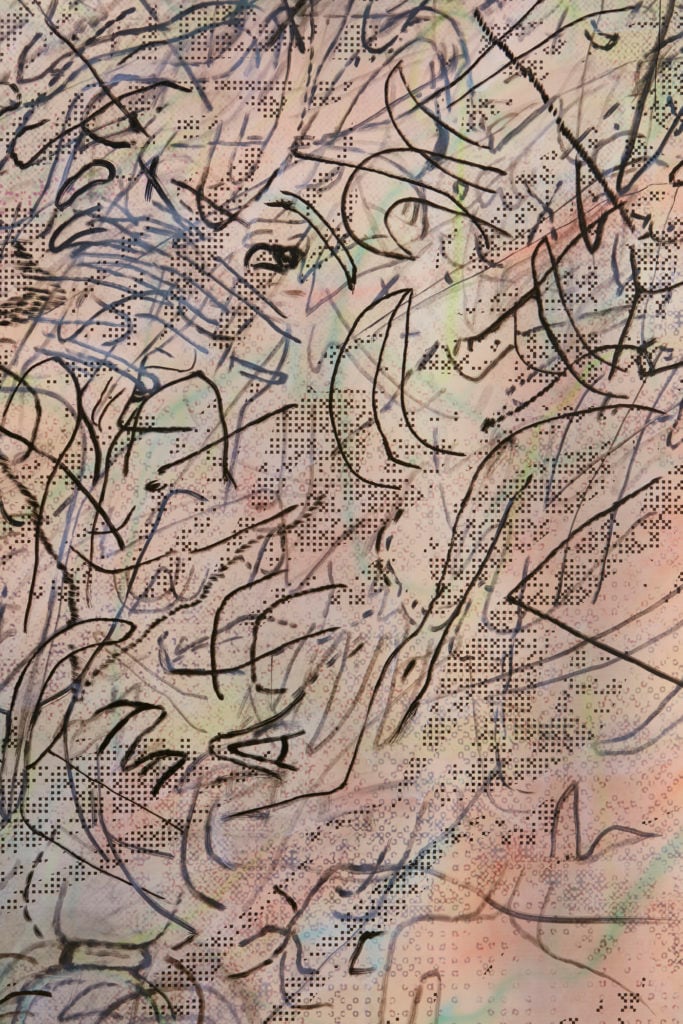
Julie Mehretu, Howl, eon (I, II) (2017) (detail). Courtesy the artist and Marian Goodman Gallery; commissioned by the San Francisco Museum of Modern Art. ©Julie Mehretu; photo Tom Powel Imaging, Inc.
The paintings are built—literally—on the idea of the American West as a site of both great possibility and great destruction. “We talked a lot about what is going on here [in San Francisco] right now,” Garrels says. “As I said to Julie, I feel like I’m living in a new gold rush, with young people flowing into the Bay Area from all over the world to make their fortunes.”
To create the compositions, Mehretu first compiled images of landscape paintings of the West by frontier-seeking artists like Albert Bierstadt and Frederic Edwin Church. She juxtaposed the images with newspaper photos of recent riots and protests following police shootings of black men—a stark reminder that this American Dream is not equally available to all. Then, she blew up the images so large that they became pixelated beyond recognition and had them printed on canvas by a company in Germany.
Back in Harlem, she and her studio team encased the canvases in layer upon layer of clear acrylic “to create the sense that these images were embedded, embodied in the canvas,” Garrels says. By the time they finished the months-long process, the surfaces “were smooth as glass.”

Julie Mehretu at work. Courtesy the artist and Marian Goodman Gallery ©Julie Mehretu; photo Tom Powel Imaging, Inc.
Finally, it was time for Mehretu to begin painting. She began in earnest in the months following the presidential election. “I don’t think there is any one-to-one reference [between the election and the paintings], but you feel a turbulence, an unsettled quality,” Garrels says.
Mehretu was constantly transitioning between the lift and the ground to see how each mark contributed to the very large whole. “There is something very intense about being enveloped in the thing you’re working on—it’s hard for me to imagine what that must feel like,” Garrels notes.
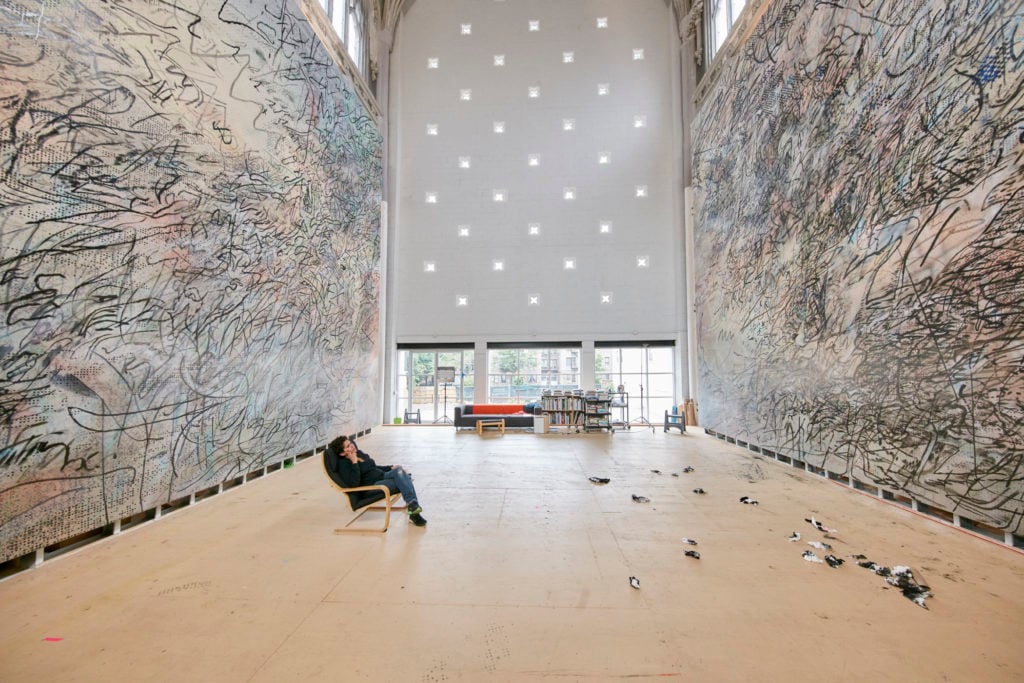
Julie Mehretu at work. Courtesy the artist and Marian Goodman Gallery © Julie Mehretu; photo Tom Powel Imaging, Inc.
Their journey now completed, the works are scheduled to remain on view for at least three years. Later this week, Garrels will present them to the museum’s acquisitions committee, in the hope that they might become a permanent part of the collection. He expects a favorable result. “My sense is that they are going to become a beloved part of this museum,” he says.
Julie Mehretu, HOWL, eon (I, II) at the San Francisco Museum of Modern Art, September 2–ongoing.